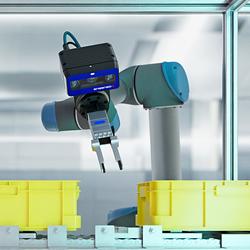Investment In Robotics Research – Global Report 2021 by IFR
International Federation of Robotics releases “World Robotics R&D Programs”
As the economies reopen from the pandemic, Asia, Europe and America adjust their robotics research funding programs (R&D). What are the targets of the officially driven government programs today? This has been researched by the International Federations of Robotics and published in the 2021 update paper of "World Robotics R&D Programs".
Investment In Robotics Research - International Federation of Robotics releases Global Report 2021
Tweet this
"The first version of World Robotics R&D Programs was introduced in June last year. Since then, dozens of countries have updated their robotics R&D programs." says Prof. Dr. Jong-Oh Park, Vice-Chairman IFR Research Committee and member of the Executive Board. "The five most advanced robotics countries, South Korea, Japan, Germany, USA and China follow up a very different strategic focus."
Robotics R&D programs - officially driven by governments
The strategic plan Made in China 2025 comes as a blueprint to upgrade the manufacturing capabilities of Chinese industries. In order to promote the rapid development of intelligent robot technology, the key special projects of "Intelligent Robots" are being deployed in accordance with the requirements of the "Innovation Chain". The statistical yearbook "World Robotics" by IFR shows that China reached a robot density of 187 units per 10,000 workers in the manufacturing industry - the country ranks 15th worldwide.
The new European Framework Program Horizon Europe has been launched on research and innovation over the period of 2021 to 2027. Horizon Europe will support top researchers, innovators, and general citizens to develop the knowledge and solutions needed to ensure a green, digital, and healthy future. The robotics-related work program 2021-2022 in Cluster 4 will provide total funding of 240 million USD (198.7 million EUR).
The National Robotics Initiative (NRI) in the USA was launched for fundamental robotics R&D supported by the US Government. A key sector is "Space Robotics", where NASA launched a lunar program named "Artemis" with the purpose to return astronauts to the lunar surface by 2024 and to construct promising capabilities for Mars missions after 2024.
Featured Product

3D Vision: Ensenso B now also available as a mono version!
This compact 3D camera series combines a very short working distance, a large field of view and a high depth of field - perfect for bin picking applications. With its ability to capture multiple objects over a large area, it can help robots empty containers more efficiently. Now available from IDS Imaging Development Systems. In the color version of the Ensenso B, the stereo system is equipped with two RGB image sensors. This saves additional sensors and reduces installation space and hardware costs. Now, you can also choose your model to be equipped with two 5 MP mono sensors, achieving impressively high spatial precision. With enhanced sharpness and accuracy, you can tackle applications where absolute precision is essential. The great strength of the Ensenso B lies in the very precise detection of objects at close range. It offers a wide field of view and an impressively high depth of field. This means that the area in which an object is in focus is unusually large. At a distance of 30 centimetres between the camera and the object, the Z-accuracy is approx. 0.1 millimetres. The maximum working distance is 2 meters. This 3D camera series complies with protection class IP65/67 and is ideal for use in industrial environments.
